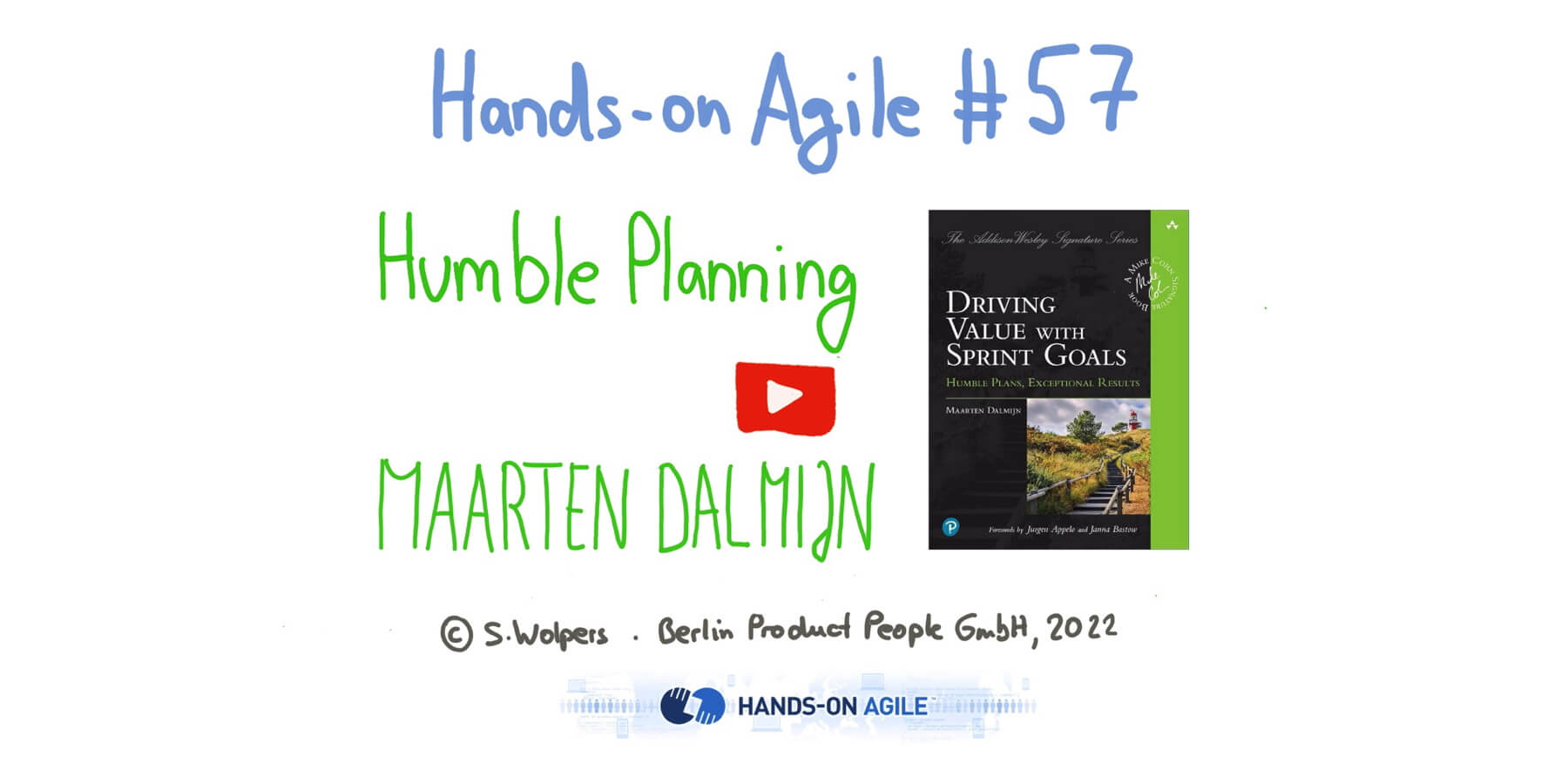Humble Planning: Maarten Dalmijn at the 57th Hands-On Agile Meetup
Maarten introduces the concept of humble planning and why it’s crucial for succeeding with an Agile way of working and building products of exceptional value.
TL; DR: Humble Planning With Maarten Dalmijn
In this fascinating talk, Maarten introduced the concept of humble planning and why it’s crucial for succeeding with an Agile way of working and building products of exceptional value. During his talk, he covered concepts like friction, the three gaps model of Bungay, intent, intent-based leadership, humble planning, sprint goals, the fog of beforehand, and the fog of speculation. It is a must-see for all Agile practitioners!

Abstract
When faced with uncertainty, risk, and complexity, our natural response is to focus on what we know and to spend more time talking, analyzing, planning, and predicting. As a result, our plans become filled with speculation and rooted in our imagination. Our plans as an anchor stifle the ability to respond to changes. We become locked into plans that prevent collaboration, learning, and discovery.
In this talk, Maarten showed why instead of starting with overconfident plans, we should start with humble plans: How can we encourage our teams to begin with humble plans and what do teams need to adapt their plans as they discover and learn what’s necessary while doing the work? Maarten covered concepts like friction, the three gaps model of Bungay, intent, intent-based leadership, humble planning, sprint goals, the fog of beforehand, and the fog of speculation.
During the Q&A part on humble planning, Maarten answered the following questions among others:
- In a team (same) with multiple products within a sprint, it seems impossible to articulate a sprint goal, let alone a unifying sprint goal. What would you recommend? (Shortening sprints to days?)
- If the time foreseen for the rebuild of products was originally much longer, would they have been delivered on time?
- A lot of advice around sprint goals mentions making it specific and measurable (SMART). But not all sprint goals can be measured, so how would you approach this?
- What do you suggest when product plans are tightly tied to the company’s annual financial planning cycle? How do you acquire or forecast the $$$ from the leadership?
- Have you often made stuff up regarding Timelines? If so, how did it go?? What if your humble plans become over-budget? Should you consider question line 6 also? Because sometimes your timeline is shaped by your budget.
- How would you define friction?
- Could you elaborate on scaling by humble plans, dysfunctions mapping + patterns?
- How do you recommend mitigating risks and blockers that come up in a Sprint that affect the Sprint Goal?
- If you have a team that is used to measuring outputs, what is the best way to get them to switch to measure outcomes instead?
- How do you deal with teams that want a long-term plan, and how do you deal with psychology?
About Maarten Dalmijn
Maarten Dalmijn is a consultant, speaker, and trainer at Dalmijn Consulting. He is the author of the book Driving Value with Sprint Goals.
Maarten helps teams to beat the feature factory all over the world. Millions of practitioners have read his best-practice articles on Agile, Scrum, and Product Management. He specializes in helping companies build empowered teams to discover better ways of delivering value.
He has been working as a Product Leader. He’s focused on coaching teams to deliver the highest value for their customers. One of his hobbies is writing articles. He shares his ideas on Substack and loves learning from everyone.


Comments